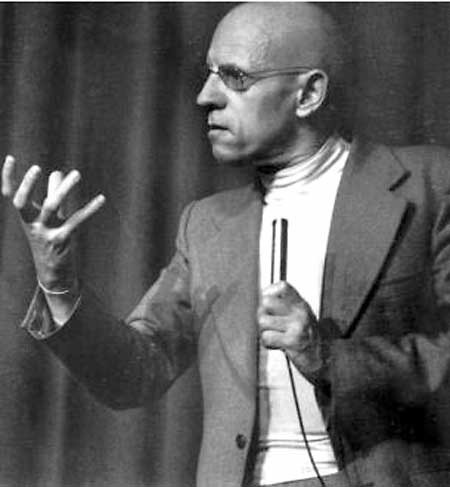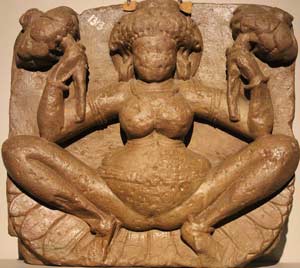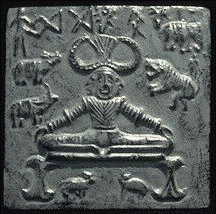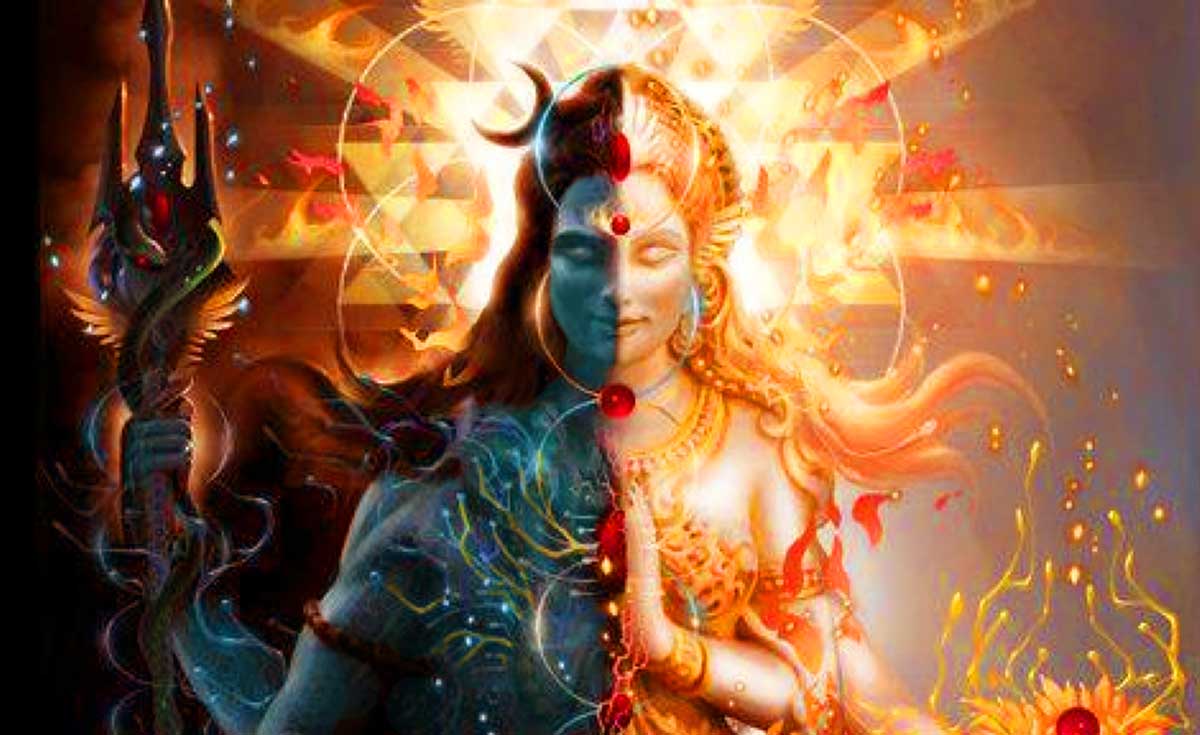Editor’s Note:
In this and the next two issues of Sutra Journal, Dr. Stuart Sovatsky discusses the nature and the impact of the Scientia Sexualis, the sex-desire-centric
‘liberated sexuality’ based in Freudian theories and supported by modern birth control methods, which has also appropriated Indic Ars Eroticas of
Kundalini-Tantra and Hatha Yoga in Scientia modes of ‘neo-tantra’ and ‘neo-yoga’.
The nature and power of Ars Erotica itself is rooted in a lifelong ‘perineum-to-pineal’ spinal puberty of ‘profound pleasures’, tied to a sacred inner
development, as seen in the ‘liberations’ noted in the Dharma traditions of Indian Kundalini-Tantra and in charismatic ‘being moved’ spiritual traditions.
These two terms were coined by Michel Foucault in his Vol.1, The History of Sexuality as will be further discussed on Dr Sovatsky’s article.
Creating Joyful Families and Grace-bestowing Saints in The Grand Unfolding Yogaverse
Reverberations in the body and the soul…the elixir of life
Dedicated to

Michel Foucault (1926-1984)
“[There are]…the societies--and they are numerous: China, Japan, India, Rome, the Arabo-Moslem societies—which endowed themselves with an ars erotica [in
contrast to scientia sexualis, as Foucault called both The Church’s moral-confessional approach to right and wrong ‘erotic truth’ and modern sexological
research ‘truths’, sexual liberation encouragement-truths and practices, all based in psychoanalytic theory and its many offshoots]….
In the [secret] erotic art, truth is drawn from pleasure itself, understood as a practice and accumulated as experience; pleasure is not considered in
relation to an absolute law of the permitted and the forbidden, nor by reference to a criterion of utility, but first and foremost in relation to itself,
it is experienced as pleasure, evaluated in terms of its intensity, its specific quality, its duration, its reverberations in the body and the soul.
Moreover, this knowledge must be deflected back into the sexual practice itself, in order to shape it as though from within and amplify its effects. In
this way, there is formed a knowledge that must remain secret, not because of an element of infamy that might attach to its object, but because of the need
to hold it in the greatest reserve, since according to the tradition, it would lose its effectiveness and its virtue by being divulged. [Though unknown to
Foucault, ‘secret’ or esoteric energetic ‘initiation-knowledge’, such as via shaktipat, Kundalini, Holy Ghost, baraka and other charismatic bodily
awakenings, should be included here.]
.… The effects of this masterful art, which are considerably more generous than the spareness of its prescriptions would lead one to imagine, are said to
transfigure the one fortunate enough to receive its privileges: an absolute mastery of the body, a singular bliss, obliviousness to time and limits, the
elixir of life [my emphasis] the exile of death and its threats.”
(Michel Foucault, The History of Sexuality, V. 1. pp. 57-58)
Scientia sexualis
From Scientia Sexualis to the Ars Eroticas of Kundalini and Pariyanga Tantras

Scientia sexualis

Ars erotica (Julianne Reynolds)
On the left is a scientia sexualis image meant to activate what the sexually-adventurous and preeminent social historian, Michel Foucault called its “most
imaginary element, the desire for sex.” From this alluring and singularly-attuned center, a world of sexuality represents itself to us in hundreds of
millions of images, numerous psychosexual theories and myriad consequent personal interactions and hopes, as if sex-desire is anything but an imaginary
construct, as if this desire, shaped by Freud, Reich and all who followed, is, in all actuality, the final and unquestionable truth and ‘liberation’ of
Eros. Indeed, the expansion of Eros into ‘spiritual realms’ by Carl Jung resulted in his expulsion from the Freudian circle while Freud, in his
understandably naïve times, mischaracterized yoga as a suppression of ‘the instincts’ that only sex can satisfy.
 Even including Liberal critiques from Feminism (objectification), Marcuse (commodification) and Lasch (narcissism), the pull of desire draws nearly
everyone back into its scientia sexualis precincts. Such images and their arousing desires still capture the one and only ideal aesthetic of erotic life,
desired pleasures and erotic exchange or self-stimulations. And, in looking at the exquisite, air-brushed image, even for just a few moments, is there any
doubt why it is so powerful?
Even including Liberal critiques from Feminism (objectification), Marcuse (commodification) and Lasch (narcissism), the pull of desire draws nearly
everyone back into its scientia sexualis precincts. Such images and their arousing desires still capture the one and only ideal aesthetic of erotic life,
desired pleasures and erotic exchange or self-stimulations. And, in looking at the exquisite, air-brushed image, even for just a few moments, is there any
doubt why it is so powerful?
Thus, gay, straight, teenager, elder, weighty-bodied—all are drawn to their own iconic images within this now-ubiquitous theory of gender, pleasures and
bodies that presents itself as a timeless, universal fact of human nature, rather than as a provisional theory devised within the conditions of a specific
‘modern’ cultural-historical context.
While psychoanalysis made sex-desire into a first-ever ‘scientific discovery’ of the fundamental meaning of human existence hidden everywhere, effective
and easily available contraceptives and safe, legal abortion technologies (and widespread, “Use protection!” Teen Sex Education) fostered its practical
expansion far beyond the intrusive power of fertility and unintended conceptions, to the greatest degree in all human history. Indeed, the far-seeing
anthropologist, Ashley Montagu ranked the evolutionary impact of legalization of The Pill in 1960 with the primeval discovery of fire.
This sequestering of the Foucauldian ‘elixirs of life seed-creativities’ in order to free sex-desire from unwanted fertility also thoroughly screened out
the fundamental consciousness-seed connection ubiquitously present for seven millennia in Indic ars erotica (yoga, Buddhism, advaita and tantra) as they
began, unavoidably piecemeal, to enter the West since The Sixties’ peak era of the scientia sexualis’s ‘Final Truth Sexual Liberation’ influences. Indeed,
many mature, ars erotica visiting gurus were swept into the currents of scientia sexualis culture or their ars erotica teachings were misconstrued within
the scientia spell.
Further, powerful, synthetic entheogens of the times (lsd, mescaline, psilocybin) could bypass in a ‘mad’, Kerouac-flash any yogic-scriptural claims for
the long-developing role of yogic or Buddhist seed forces in spiritual development, or so it seemed to scientia spell-bound spiritual seekers, whether
regarding ‘tantric sex’, yoga or in meditative enlightenment.
Sounding like an lsd cosmic orgasm of consciousness, Gopi Krishna’s 1971 description of the surges of Kundalini awakening captured the attention of
clinically-minded Transpersonalists, such as my predecessor at the Kundalini Spiritual Emergence Center, Lee Sannella, M.D. (author of the meme-setting
book, Kundalini: Transcendence or Psychosis?)
“Suddenly, with a roar like that of a waterfall, I felt a stream of liquid light entering my brain through the spinal cord. . . . The illumination grew
brighter and brighter, the roaring louder, I experienced a rocking sensation and then felt myself slipping out of my body, entirely enveloped in a halo of
light. . . . It grew wider and wider, spreading outward while the body, normally the immediate object of its perception, appeared to have receded into the
distance until I became entirely unconscious of it. I was now all consciousness without any outline, without any idea of corporeal appendage, without any
feeling or sensation coming from the senses, immersed in a sea of light simultaneously conscious and aware at every point, spread out, as it were, in all
directions without any barrier or material obstruction. I was no longer myself, or to be more accurate, no longer as I knew myself to be… but instead was a
vast circle of consciousness in which the body was but a point, bathed in light and in a state of exultation and happiness impossible to describe.”
Krishna, Kundalini: Path to Higher Consciousness (New Delhi: Orient Paperback, 1992, pp. 6-7)
In complete congruence with those frothy scientia sexualis times, Krishna’s emphatic inclusion of the role of the seed-forces in Kundalini processes would
be ignored. Instead of being understood as a spiritual blessing in the flesh, similar to the birth of a baby, Kundalini, the Mother of Creation for
thousands of years, was now a kind of light-show of odd-sensation distractions in the awakening process, as troubled persons and under-informed clinicians
made use of the term to try to make sense of a wide range of unrelated ‘symptoms’.
Yet, we shouldn’t be surprised. The East-West exchange is just beginning. Indeed, little more than five percent of the Indo-Tibetan archive is translated,
and almost entirely from the perspective of the scientia sexualis.
Yet, as early as 1932 and without much of an alternative in mind, Huxley wondered if the scientia sexualis liberation might be a darkly fraught, “brave new
world” of pleasure that masked a quiet narrowing of human possibilities for life and intimacy. Likewise, Marcuse saw the scientia sexualis as a “repressive
de-sublimation” of eros embedded in an unsustainably rapacious capitalism. His 1955 proffered but vague response in Eros and Civilization, too, was a
“spiritualization of the [elixir] instincts.”
 Echoing both writers in 1976 (French original date) and armed with only rudimentary knowledge of the ars erotica, Foucault closed his critique of the
scientia sexualis with this prediction:
Echoing both writers in 1976 (French original date) and armed with only rudimentary knowledge of the ars erotica, Foucault closed his critique of the
scientia sexualis with this prediction:
"…in a different economy of bodies and pleasures, people will no longer quite understand how the ruses of [scientia] sexuality, and the power that sustains
its organization, were able to subject us to that austere monarchy of sex, so that we became dedicated to the endless task of forcing its secret, of
exacting the truest confessions from its shadow…having us believe that our 'liberation' is in the balance."
(The History of Sexuality, v. 1, p. 159)
In his reversed characterization of our modern era of “sexual liberation” as the “austere monarchy of sex,” Foucault (who later contracted and died of HIV)
goads us toward somewhere else, outside this ironic, compelled “austerity.” And, if modern sexuality is an “austerity,” a “brave new world” of sexually
free, but deeply limited human bonding, compared to the ars erotica , what must the latter be like?
What must the ars erotica include that it renders ‘sexuality’ an over-worked, nearly barren sector of some greater realm of Eros? Succinctly, it includes a
profound link of the activated Mother Kundalini Seed force (but not the de-seeded, medico-scientia sexualis bowdlerized version of ‘Kundalini’ of the
transpersonal spiritual emergence discourse, au courant) with the deepest creativities of the Body and Consciousness.
As a first step toward the ars erotica, hipper sectors of the scientia sexualis now speak of “the spirituality of sacred sex” and even the prolonged,
nonejaculatory and passionate “…fucking one’s partner to God” of David Deida that borrows from Osho, Margot Anand and the men’s movement, who, along with
Adi Da, countered Reich’s centralized “function of the orgasm” with an endless karezza eroticism.
Thus, too, Pulitzer-winner, William Broad chose “thinking-off” (touchless fantasy masturbation) as his (half-a-step backwards) hint-of-a-step toward the
‘deeper’ aspects of yoga and tantra in his New York Times front-page featured scientia yoga book, The Science of Yoga (2012).
For, in the shift from monarchical scientia sexualis ubiquity to ars erotica transpersonal (consciousness-enhancing) ubiquity, all that goes on in this
‘thinking’ and its radically different ‘off ‘ must be re-considered:
- the re-centering with ‘the pleasures of profundity’ where ‘sex-desire pleasures’ once reigned
- where, and in what moods, might partners focus their attentions upon genitals, mouths, anuses, feet, tongues, breasts, heart
- ‘happy-ending’, simply disposable ‘cum’ and vaginal ‘lubrication’ become the hermetically-prized alchemical male and female elixirs of life itself:
entheogenic retas, ojas, auras, madhu, amrita, soma-rasa; the hormonal basis of unbreakable love and matured enlightenment
- the new (perhaps only in Sanskrit) vocabulary used to re-name the then-occurring sensations (e.g., Shakti chalani, brahmacharya urdhvaretas, khecari
mudra pariyanga, ‘moving the divine feminine’, ‘uplifted inner marriage seed-juices’, and ‘lingual-pineal delight gesture lovemaking’, respectively)
- indeed, the spine, forehead, throat and pineal will also become primary realms of erotic rapport and arousal, not as scientia arousals of desire, but
within the ars erotica’s ‘new economy of bodies and pleasures’.
Likewise, past-president of the Society for the Scientific Study of Sex and a chief architect of the scientia sexualis for forty years, Marty Klein also
writes in Sexual Intelligence (HarperOne, 2012) that the narratives, theories and stories we create about ‘sex’ are more powerful than ‘sex’ itself in
determining how ‘sexuality’ unfolds in people’s lives—not the mere freeing-up of an obvious desire.
From loftier heights, Wittgenstein noted how theories create self-enclosed “forms of life, language-behavior games”, Heidegger lyricized how language
“conceals, as it reveals” and Kuhn’s paradigm analysis showed how dominant theories, such as the mega-dominant, scientia sexualis ignore and even squelch
any contradictory information.
For, should modern yoga and tantra of the current eighteen million enthusiasts be re-understood as seed-elixir infused ars erotica, a massive truing and
disorienting paradigm shift in all East-West spirituality will be triggered.
Further, the tantric ars erotica embodies gender in the universal, hermaphroditic mystery of the perineum trikona (hermaphroditic “triangle”) where the
catalytic powers that contain every sort of male or female heterosexual, lesbian, gay, bisexual, transsexual, devotee/demigod/demi-goddess, femme, dyke,
she-male, et al possibility, as ars erotica entheogenic power spots. The ground under scientia sexualis theories of gender will also shake.
Below are two images of the perineal trikona, in utero and in the matured, inner-marriage yogi and a third image of the yogi in his/her full body
ardha-nari (all-gendered, cosmic union) matured state:

The vagina-penis androgynous perineum of all humans in utero during early gestation…

…that forms the basis of the heel to androgynous perineum Siddha Asana (Cosmic Power Asana) that awakens Kundalini at the base of the spine, as seen in ancient Pashupati Seal.

Shiva as commingled male/female union or yoga.